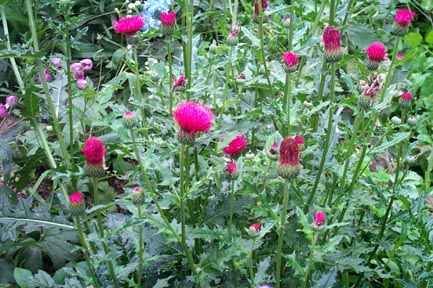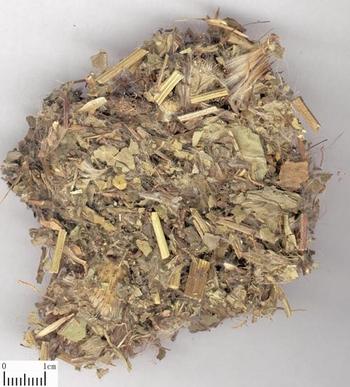 Cirsium
japonicum 大
蓟 Dà
jǐ, Bai ji
Prickly turnip, Japanese
Thistle Family: Asteraceae
Cirsium
japonicum 大
蓟 Dà
jǐ, Bai ji
Prickly turnip, Japanese
Thistle Family: Asteraceae
 FLAVOR: Sweet, bitter, sharp CHANNEL:
Liver, Spleen, Lung, Heart, Kidney
FLAVOR: Sweet, bitter, sharp CHANNEL:
Liver, Spleen, Lung, Heart, Kidney
 HABITAT:
Grows wild on sunny slopes.
HABITAT:
Grows wild on sunny slopes. Ethanol extract of Cirsium japonicum attenuates hepatic lipid accumulation
via AMPK activation in human HepG2 cells.
Wan Y, Liu LY, Hong ZF, Peng J.
Abstract
One of the most common causes of chronic liver disease, nonalcoholic fatty liver
disease (NAFLD), is strongly associated with obesity and dysregulated insulin
action in the liver. However, there are no pharmacological agents currently
established for the treatment of NAFLD. A flowering plant in the Asteraceae
family, Cirsium japonicum (CJ), exhibits a variety of pharmacological and antioxidative
properties that promote hepatoprotection. In the present study, CJ ethanol extract
was shown to reduce hepatic triglyceride (TG) and cholesterol accumulation.
CJ significantly increased AMP-activated protein kinase (AMPK) phosphorylation
in HepG2 hepatocytes and downregulated the level of the target genes, acetyl-CoA
carboxylase and fatty acid synthase. In addition, CJ upregulated the expression
of carnitine palmitoyltransferase-1, which is involved in fatty acid oxidation.
The results of the present study indicated that the positive effects of CJ extract
on high-fat diet-induced hepatic TG accumulation were mediated via the AMPK
signaling pathway, indicating a potential target for the preventative treatment
of NAFLD.
Exp Ther Med. 2014 Jul;8(1):79-84. Epub 2014 Apr 25. ncbi.nlm.nih.gov